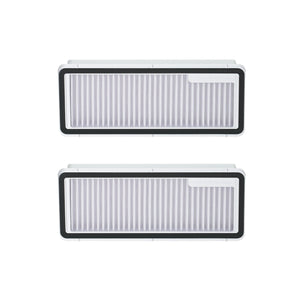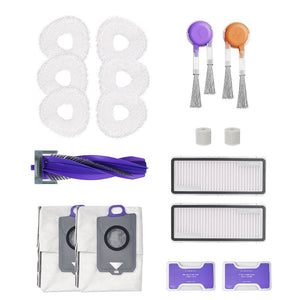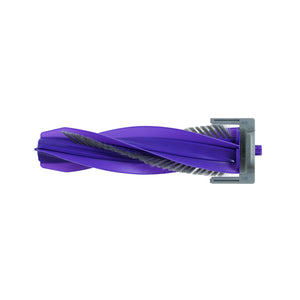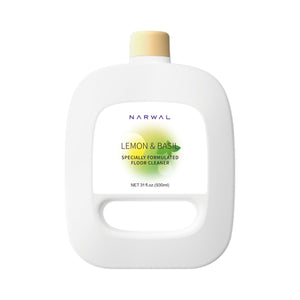It can be difficult to maintain clean flooring, particularly if they are uneven. Bumps, thresholds, and slopes can make it difficult for traditional vacuums to do their job. Robot vacuums are useful in this situation. But can they handle uneven floors? Let's find out.
What Challenges Do Uneven Floors Pose for Robot Vacuums?
Uneven floors can make it tough for robot vacuums to do their job effectively. These surfaces often include cracks, bumps, or varying textures, which can range from slightly raised thresholds between rooms to more noticeable slopes and uneven tiles. Such variations in floor height and texture create significant obstacles for robot vacuums.
One of the most common issues faced by robot vacuums on uneven floors is getting stuck on thresholds. Many homes have small thresholds or transitions between different types of flooring, and robot vacuums might get stuck on these raised edges. This interrupts their cleaning cycle and often requires manual intervention to free the device.
Additionally, robot vacuums can have difficulty climbing over small bumps. Even minor obstacles can pose significant challenges, as these devices might struggle to navigate over them. This difficulty can prevent the vacuum from reaching and cleaning certain areas of your home, leading to missed spots and incomplete cleaning sessions.
Sloped or inclined surfaces present another challenge for robot vacuums. These surfaces can affect the vacuum's ability to maintain proper suction and cleaning efficiency. The vacuum might slip or miss spots, resulting in uneven cleaning results.
How Do Robot Vacuums Navigate Uneven Floors?
Robot vacuums use advanced technology to navigate uneven floors. They rely on sophisticated navigation systems, sensors, and mapping techniques to move around and clean efficiently. These technologies help them detect and avoid obstacles, adjust to changes in floor height, and create accurate maps of their surroundings.
Navigation technology
Robot vacuums are equipped with navigation technology that helps them move around your home efficiently. This technology often includes gyroscopes and accelerometers, which allow the vacuum to detect changes in orientation and movement. These components work together to ensure the vacuum can navigate over small bumps and thresholds without getting stuck.
Additionally, some high-end models use more advanced systems, such as simultaneous localization and mapping (SLAM), to navigate complex environments more effectively.
Sensors and mapping
Sensors play a crucial role in helping robot vacuums navigate uneven floors. Mapping the surroundings is often done with camera-based systems and LIDAR technology.
LIDAR systems measure distances and produce a comprehensive map of the space using laser beams, whilst camera-based systems take pictures to comprehend the arrangement. These mapping techniques enable the vacuum to plan its cleaning path, avoid obstacles, and adjust to changes in floor height. Accurate mapping ensures that the vacuum can cover the entire floor surface, even if it is uneven.
Obstacle detection
Obstacle detection is another essential feature that helps robot vacuums navigate uneven floors.
In order to prevent falls, edge detection sensors enable the vacuum to identify and avoid edges, such as stairs. Cliff sensors, which are typically located at the bottom of the vacuum, detect sudden drops and ensure the device changes direction to avoid falling off ledges.
These sensors help the vacuum navigate safely and effectively, even in homes with uneven floors.
Are There Robot Vacuums Recommended for Uneven Floors?

Yes, the Narwal Freo series are excellent for homes with uneven floors.
NARWAL Freo Z Ultra
The NARWAL Freo Z Ultra is purpose-built to handle the challenges of uneven floors with its cutting-edge AI-powered navigation system and dual HD cameras. These technologies enable the vacuum to map your home in real-time, detecting and adapting to floor height variations, bumps, and thresholds. Its advanced obstacle avoidance ensures smooth transitions without getting stuck, even in complex layouts.
To deliver optimal cleaning on uneven surfaces, the floating main brush automatically adjusts its height, maintaining close contact with the floor to remove debris while protecting delicate finishes. The industry-leading 12,000Pa suction power pairs with the brush to extract dirt from crevices, uneven tiles, and textured carpets effortlessly.
The dual mop system, applying 2 lbs of pressure and rotating at 180 RPM, thoroughly scrubs tough stains on hard floors, even on uneven surfaces where grime can accumulate. When transitioning onto carpets, the mop lifts by 12mm, ensuring rugs remain dry and free from contamination.
Its self-cleaning base station complements these features by washing and drying the mop heads with water heated up to 167°F, preventing odors or residue. With its ability to store 120 days’ worth of compressed dust, the Freo Z Ultra eliminates the need for frequent maintenance, making it ideal for homes with varied and uneven flooring.
[cta:narwal-freo-z-ultra-robot-vacuum-mop]
NARWAL Freo X Ultra
With LiDAR 4.0 Navigation, the Narwal Freo X Ultra can scan 360 degrees in order to determine and carry out an ideal cleaning path. This technology allows the vacuum to traverse your home efficiently, even over bumps and thresholds. The millimeter-precision obstacle avoidance system uses a tri-laser array to monitor surroundings, avoiding small and low-lying objects. The side-laser enables the robot to clean within millimeters of obstacles, ensuring thorough cleaning even in tight spaces.
Narwal Freo X Ultra's cleaning pressure may be adjusted to accommodate various floor types.It uses a mild 7N pressure on wooden floors to provide a thorough cleaning without causing damage, and a 12N pressure on tile floors to give the most thorough cleaning on surfaces with greater durability. This adaptability ensures optimal cleaning performance on both flat and uneven floors.
Additionally, the automated mop lifting feature raises the mop heads by 12mm to avoid carpet contamination, making it suitable for homes with mixed flooring types.
[cta:narwal-freo-x-ultra-robot-vacuum-mop]
NARWAL Freo X Plus
Designed with uneven floors in mind, the NARWAL Freo X Plus combines LiDAR SLAM 4.0 navigation and a tri-laser obstacle avoidance system to handle the unique challenges posed by varying surfaces. It accurately scans its surroundings in 360 degrees, mapping out efficient cleaning paths while avoiding bumps, furniture legs, and other obstacles, even in tight spaces.
To adapt to uneven flooring, the vacuum features a floating zero-tangle brush that adjusts to surface irregularities. This ensures consistent contact for debris removal, while its 7,800Pa suction power tackles dirt and pet hair embedded in crevices or textured tiles. The brush’s cone-shaped design prevents tangling, further enhancing its performance on challenging surfaces.
The adaptive mopping system provides cleaning pressure tailored to floor types. On uneven wooden floors, it uses gentle 6N pressure to clean thoroughly without damage, while on durable tiles, it increases pressure to eliminate stubborn dirt. Additionally, the 9mm mop-lifting capability allows seamless transitions over carpets, ensuring mixed flooring remains spotless without cross-contamination.
The self-emptying dustbin, with a capacity for up to 7 weeks’ worth of debris, and the compact, quiet base station make the Freo X Plus low-maintenance and convenient for daily use. Its ability to clean effectively and navigate uneven flooring with precision ensures your home stays spotless, no matter how complex the layout.
[cta:narwal-freo-x-plus-robot-vacuum-and-mop]
How Can You Optimize Your Robot Vacuum’s Performance on Uneven Floors?
Optimizing your robot vacuum’s performance on uneven floors involves proper maintenance, setup tips, and using the right accessories and settings.
Maintenance and setup tips
To keep your robot vacuum performing well on uneven floors, regular maintenance and proper setup are crucial. Here are some tips:
- Regular Cleaning of Sensors and Wheels: Dust and debris can accumulate on sensors and wheels, affecting the vacuum’s navigation and cleaning efficiency. Regularly clean these parts with a dry cloth to ensure they function correctly.
- Ensuring Proper Firmware Updates: Manufacturers often release firmware updates to improve performance and fix bugs. Regularly check for and install these updates to keep your vacuum running smoothly.
- Setting Up the Charging Dock: Place the charging dock in an accessible, flat area free from obstacles. This ensures the vacuum can easily find its way back to recharge without getting stuck on uneven surfaces.
- Using Ramps for Thresholds: If your home has high thresholds that the vacuum struggles to cross, consider using small ramps. These ramps can help the vacuum transition smoothly between different floor levels.
- Monitoring Battery Health: Keep an eye on your vacuum’s battery health. Avoid letting the battery drain completely and try to keep it charged above 20%. If the battery shows signs of wear, consider replacing it to maintain optimal performance.
Recommended accessories and settings
Using the right accessories and settings can significantly enhance your robot vacuum’s ability to handle uneven floors. Here are some recommendations:
- Virtual Walls and No-Go Zones: Many robot vacuums come with virtual wall features or the ability to set no-go zones. Make use of these functions to keep the vacuum out of places where it could become trapped or have problems.
- High-Threshold Climbing Wheels: Some vacuums offer upgraded wheels designed to handle higher thresholds and uneven surfaces. Consider models or accessories that include these features to improve navigation.
- Custom Cleaning Modes: Take advantage of custom cleaning modes that adjust the vacuum’s performance based on the floor type. For example, use a mode that increases suction power on carpets and reduces it on hard floors to enhance cleaning efficiency.
- Adjustable Suction Power: Some vacuums allow you to adjust the suction power manually. Increase the suction on uneven or textured surfaces to ensure a thorough clean.
- Regular Maintenance Accessories: Use maintenance kits that include brushes, filters, and cleaning tools specifically designed for your robot vacuum model. Regularly replacing worn-out parts keeps your vacuum in top condition.

What to Look for in a Robot Vacuum for Uneven Floors
If your home has uneven floors, the right smart vacuum can make all the difference in maintaining cleanliness with minimal effort. To address the unique challenges of uneven surfaces, here are some advanced features to consider that go beyond basic requirements:
Precision Mapping & Advanced Navigation
A high-end navigation system with LIDAR sensors and real-time mapping is critical for handling uneven floors. This technology allows the vacuum to detect and adapt to changes in floor height, ensuring smooth transitions over thresholds, bumps, or irregular surfaces without getting stuck.
Pro Tip: Choose models that offer multi-level mapping to easily adapt to homes with multiple floors or diverse layouts.
Self-Adjusting Main Brush
A floating main brush is essential for uneven floors, as it automatically adjusts its height to maintain consistent contact with the surface. This ensures efficient cleaning while protecting delicate flooring like hardwood or polished tiles.
Enhanced Feature: Opt for brushes with anti-tangle technology to prevent hair or pet fur from clogging the system, reducing maintenance efforts.
Superior High-Threshold Climbing Ability
Uneven floors often involve thresholds, rugs, or raised edges. Look for vacuums capable of climbing at least 25mm, allowing them to navigate these transitions seamlessly without interruptions.
Pro Tip: Models with gradient detection can adapt to sloped areas, maintaining stability and efficiency even on inclines.
All-Terrain Wheels with Suspension
All-terrain wheels with built-in suspension are ideal for uneven surfaces. These rugged wheels can handle cracks, bumps, and transitions while maintaining balance, ensuring the vacuum remains stable and effective throughout its cleaning path.
Adaptive Suction Power
Vacuums with adjustable suction power can automatically detect changes in floor type and adjust accordingly. This feature is especially useful for deep cleaning carpets or extracting dirt from uneven tiles and crevices.
Extra Option: Some vacuums also offer manual suction control, allowing users to fine-tune performance for specific areas.
Enhanced Edge Cleaning with Contour Adaptation
Edge-cleaning technology ensures that the vacuum can thoroughly clean along walls, skirting boards, and corners where dust often accumulates. Advanced models can adapt to uneven baseboards, ensuring no dirt is left behind in hard-to-reach areas.
Upgrade Suggestion: Look for vacuums with dynamic edge brush adjustment, which can change the brush angle to match the contours of uneven edges.
Anti-Drop & Anti-Collision Sensors
For homes with stairs, steps, or hidden drops, anti-drop sensors are a must to prevent accidents. Coupled with anti-collision technology, these sensors allow the vacuum to navigate safely while avoiding furniture or fragile objects.
Multi-Surface Mode Transition
The ability to switch between modes for different floor types is critical for uneven floors. This feature enables the vacuum to adjust its suction, brush height, and mopping pressure to match the cleaning requirements of each surface.
Added Benefit: Models with an auto-lift mop feature can seamlessly switch between hard floors and carpets, avoiding moisture damage to rugs.
Auto-Lift Mop for Carpets
For homes with mixed flooring, auto-lift mopping ensures carpets remain dry while still cleaning hard floors efficiently. This feature detects carpets and raises the mop automatically to prevent accidental dampening.
Long Battery Life & Smart Charging
Uneven floors often require longer cleaning times, making 200+ minutes of battery life a vital feature. Vacuums with smart recharge and resume functionality can recharge mid-cleaning and pick up exactly where they left off, ensuring the entire home is cleaned efficiently.
Durable Build for Uneven Conditions
Uneven surfaces can be tough on vacuums, so durability is key. Look for models with anti-slip chassis, scratch-resistant exteriors, and rugged wheels that can handle the wear and tear of irregular floors.
Custom Cleaning Zones
Customizable cleaning zones allow you to target specific areas with uneven flooring or avoid certain spaces entirely. With this feature, you can ensure the vacuum focuses on the most challenging spots while skipping areas that don’t require attention.
Conclusion
Keep your uneven floors spotless with the right robot vacuum. The Narwal Freo X Ultra, along with regular maintenance and a smart setup, can handle the job. Clean sensors, update firmware and use the right accessories. Start now and enjoy a clean home effortlessly.
FAQs
Can robot vacuums go over bumps?
Yes, many modern robot vacuums can navigate over small bumps and thresholds thanks to advanced sensors and robust wheel designs.
How to use a robot vacuum on different levels?
To use a robot vacuum on different levels, simply move the vacuum and its charging dock to the desired level. Some models can remember multiple floor plans, enhancing their efficiency.
Do robot vacuums work on carpet and hardwood floors?
Yes, robot vacuums are designed to work on both carpet and hardwood floors, adjusting their cleaning modes and suction power to suit the surface type.

























































